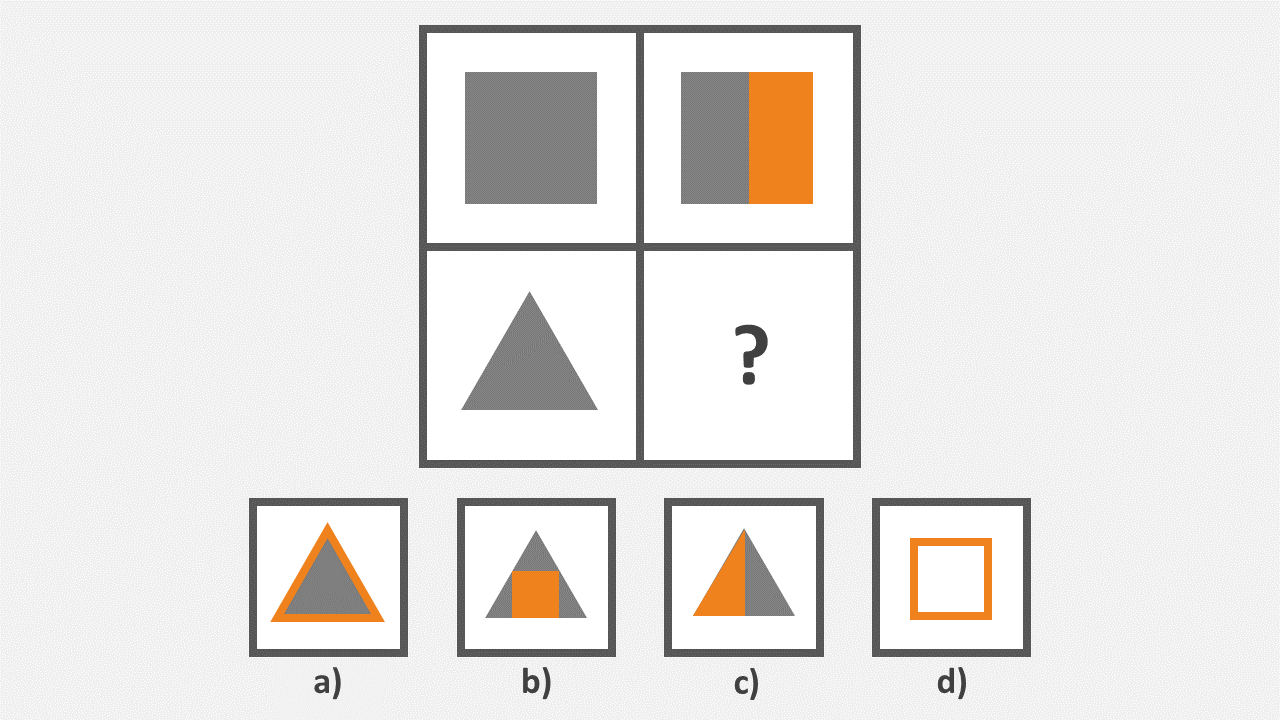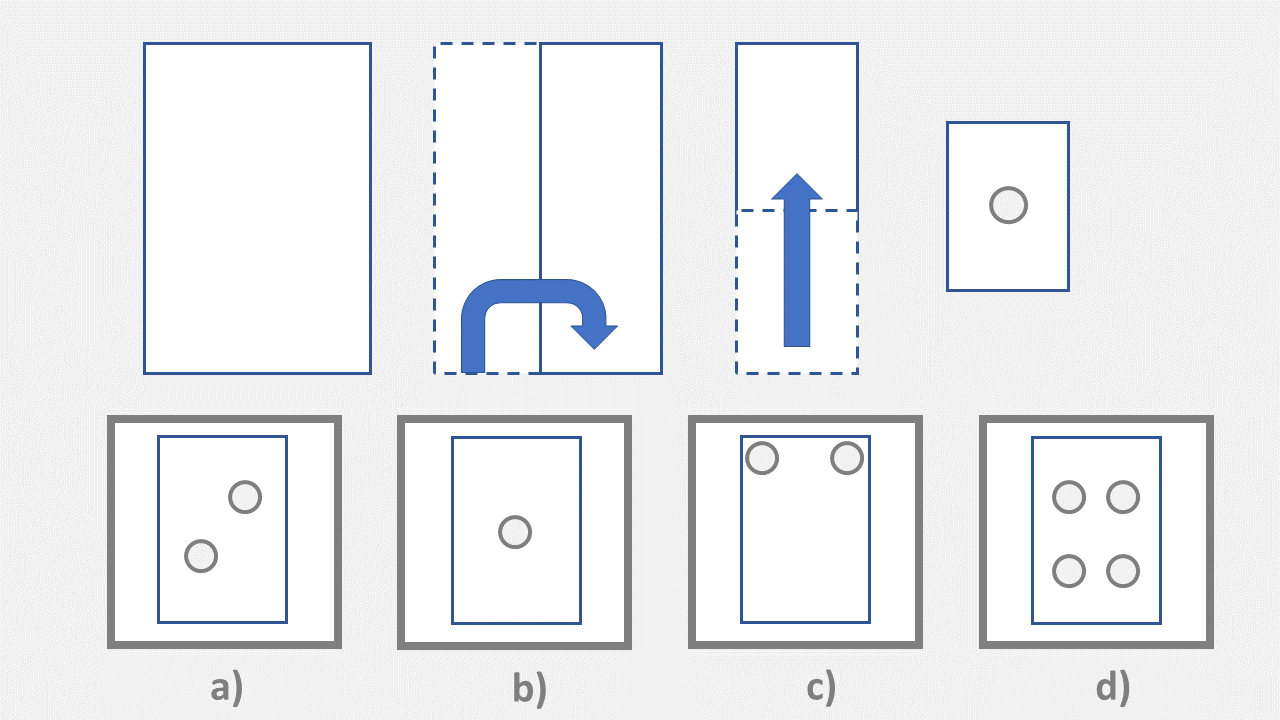How to Pass the CAT4 Level G Test in 2025 (Guide and Tips)
Updated July 16, 2024
- What Is the CAT4 Level G Test?
- What Does The CAT4 Level G Test Contain?
- CAT4 Level G Format & Sections
empty
empty
empty
empty
- CAT4 Level G Sample Questions
empty
empty
empty
empty
- How the CAT4 Level G Is Scored
empty
empty
empty
- How to Pass the CAT4 Level G in 2025
- How to Prepare for Cat 4 Level G
- Tips For Cat 4 Level G Test
- Final Thoughts
What Is the CAT4 Level G Test?
The CAT4 Level G test is a cognitive test.
It is usually taken in years 11 and 12 of the UK schooling system.
Students are usually between the ages of 15 to 17 when they take this test, which measures their cognitive abilities and academic potential.
The CAT4 results provide a forecast of how the student will perform in academia and future employment.
They are used to assess how a pupil may perform in working roles that require strong academic abilities.
Level G is the highest level of CAT4, so it is the most challenging, and adequate preparation is needed before sitting the exam.
What Does The CAT4 Level G Test Contain?
The CAT4 test contains a total of eight different modules.
Each section is designed to test a person's cognitive skills.
The test is usually taken online, and you will be given multiple-choice questions.
The CAT4 examination takes around 80 minutes to complete, so make sure you put time aside to sit the full test.
As it is such a long examination, it is separated into three sections. These are best addressed separately:
- Part one – 20 minutes to complete 48 questions
- Part two – 26 minutes to answer 66 questions
- Part three – 26 minutes to answer 54 questions
Practice Cat4 Level G with TestHQ
CAT4 Level G Format & Sections
The CAT4 is designed to provide a comprehensive assessment of a student's cognitive abilities across different domains.
Each section of the CAT4 test measures specific aspects of cognitive skills, and the results can provide insights into a student's strengths and areas for improvement.
These CAT4 Level G tests are broken down into four categories:
Verbal Assessment
In the verbal assessment, you will be presented with mixed sentences and patterns of verbal speech.
From these questions, you will have to choose the correct use of speech.
These questions will be primarily covered in the second part of the examination.
Non-Verbal Assessment
In the non-verbal assessment, you will be given visual puzzles and diagrams.
These are often scientific and can also be mathematical.
These types of questions feature in all parts of the test. However, they are more present in the first part.
Spatial Awareness Assessment
Like non-verbal assessment questions, the spatial awareness questions consist of diagrams and data.
However, these types of questions test your cognitive judgment. You must arrive at conclusions from the diagrams and data.
You will deal with these questions towards the end of part three.
Quantitative and Mathematical Reasoning Assessment
Quantitative questions consist of numerical data and problems.
You will be figuring out sequencing puzzles and mathematical problems.
From the data, you must find what the pattern or rule is.
These questions are at the end of part two and the beginning of part three.
CAT4 Level G Sample Questions
The examination questions are similar to what you can expect from an IQ test.
There are a range of IQ practice tests you can take online.
There are also examples online of spatial reasoning questions you will be presented with on the CAT4 test.
Here are a few sample questions for you to try out:
CAT4 Level G Verbal Assessment Example
Choose the correct missing word for this statement.
Her favorite song was remastering of 'Children of the Grave'.
a) There
b) Their
c) Their’s
d) They’re


Choose the answer that best reflects what the paper would look like unfolded.
What is the next number in the following sequence?
8, 6, 9, 5, 10, ___
a) 4
b) 11
c) 5
d) 8

How the CAT4 Level G Is Scored
There are 168 questions in total. Your raw score is calculated first. This is how many questions you got correct in the CAT4 level G.
The raw score is then compared with scores from other students of the same age range or school grade group.
From the comparisons and the total raw scores collected, three normative scores are calculated to analyze your performance.
Standard Age Score (SAS)
In every age group, the average score is set to 100 and there is a standard deviation of two.
This means that if two pupils from two different age groups sit the exam and receive the same SAS in the CAT4 exams, they will have done equally as well as each other when compared to their respective age group.
The SAS takes into consideration the age of the pupil and does not measure the difficulty or level of the CAT4 level G test.
National Percentile Rank (NPR)
This data is calculated by contrasting the pupil’s score to other students who sat the exam across the country.
The percentile indicates the performance level of the students and who performed better or worse.
For instance, if a pupil is very successful on the test and has an NPR of 95%, only 5% of other pupils have achieved better results.
In contrast, if the student has struggled on the exam and achieves 5%, this means that 95% of students have performed better than they did.
Stanine Grade (ST)
This is calculated from the national percentile and the SAS.
Stanine grades are split into nine divisions, each corresponding to a different level of performance.
There are five bands spread across the nine divisions, and they break down as follows:
Very High Stanine
- Stanine 9
- National percentile of 97% and above
- Corresponding SAS of 127 or higher
Above Average Stanine
- Stanines 7 and 8
- Percentile 78%–96%
- Corresponding SAS of 112–126
Average Stanine
- Stanines 4, 5 and 6
- Percentile 23%–77%
- Corresponding SAS of 89–111
Below Average Stanine
- Stanines 2 and 3
- Percentile 5%–22%
- Corresponding SAS of 74–88
Very Low Stanine
- Stanine 1
- Percentile of 4% or under
- Corresponding SAS of 73 or under
As highlighted above, the average stanine range of scores is the most comprehensive band. Most students will fall into this division.
The results are used in reports for a variety of people and professions. Teachers, universities, parents and employers use the CAT4 Level G scores to determine the best steps in education or work.
If you perform well, it is likely that you are ready to move on to the next stage in academia or in your employment.
It is a good idea to include any exemplary CAT4 Level G scores in your personal statements and resumes when applying for college or other higher education establishments.
If you do not achieve a set of results that you feel reflects your abilities, then improvement plans can be drafted.
After a close analysis of your results, it is possible to highlight where you need to improve. Extra classes and revision can be done to help you improve in these weak areas.
Practice Cat4 Level G with TestHQ
How to Pass the CAT4 Level G in 2025
The CAT4 Level G examination is rigorous, and Level G is the most difficult stage.
Here are the best ways you can prepare to pass the CAT4 Level G exam.
Step 1. Revise
As we've discussed, the CAT4 is separated into four distinct categories. Ideally, review the categories separately before you start your revision. This will help you highlight your weakest areas.
Try to spend the majority of your time improving on your weaker skills. The examination is well balanced, so each section is covered equally.
Depending on the amount of time you have to revise, set aside a certain number of hours or days in the run up to the CAT4 exam.
For example, if you have a total of 10 weeks before the examination date, attempt to revise for around two hours per week. This will result in a total of 20 hours of extra revision on top of your schoolwork and other extracurricular activities.
Speak to your teachers, supervisors, fellow pupils and parents about the examination. They may know what revision material to advise for you, and can also help with the revision process.
Step 2. Take Practice Papers
The best way to prepare is to sit past papers and online mock tests. These can be found in many locations, including TestHQ, and are easily accessible, as most of them do not require subscription.
You do not have to sit through all of the mock examinations. You might want to focus on one part of the paper and nail down this area.
However, you may want to simulate the exam situation. In this case, set it up as close as possible to the actual exam date.
Have a strict time set for each section and attempt to answer all of the questions. Afterwards, tally up the scores from each section and analyze where you need to spend the most time revising.
Past examination papers are a fundamental part of every revision process. You can do these towards the end of your revision timetable or at the very beginning. This is dependent on what you want to get from them.
If you want to familiarize yourself with the feel of the exam early on, take the practice tests at the beginning of your revision timetable.
In contrast, if you want to use the practice papers to test how well your revision has gone, take them at the end of the timetable.
Step 3. Do Your Exam Prep
After your revision period, you will be prepared as you possibly can be. Once you are a couple of days out from the test, it is unlikely that you will learn anything new.
Use the time wisely. Skim over notes you have made and write a quick checklist before the examination date.
Ensure that you are well rested and have time for the full 80 minutes. Clear your schedule and find a space where you can completely avoid distractions.
As this is an online examination, ensure that you have a good Wi-Fi connection. Also have any food and water to hand so you do not have to move from the test.
Eat a light meal before the exam and switch off your phone. If you have a parent who is available, let them know you are sitting the examination. They can help to keep you on task.
How to Prepare for Cat 4 Level G
Preparing for the CAT4 (Cognitive Abilities Test, Fourth Edition) Level G can help you familiarize yourself with the test format and improve your cognitive abilities in various areas.
Here are some tips to help you prepare for CAT4 Level G:
-
Understand the Test Format: Understand the types of questions and tasks you may encounter in each section: verbal reasoning, non-verbal reasoning, quantitative reasoning and spatial reasoning.
-
Practice with Sample Questions: Seek out CAT4 Level G sample questions and practice materials available online or in test preparation books.
-
Strengthen Cognitive Skills: To improve your performance, focus on strengthening the specific skills assessed in each section.
-
Time Management: During your preparation, time yourself while solving sample questions to ensure that you can complete each section within the allocated time. ]
-
Analyze Your Performance: After practicing with sample questions, review your answers and analyze any mistakes or areas where you struggled.
-
Seek Additional Resources: Consider utilizing test preparation resources such as books, online course or tutoring services specifically designed for CAT4 Level G.
-
Take Care of Yourself: Prior to the test day, ensure you get sufficient sleep, eat well, and stay hydrated.
Tips For Cat 4 Level G Test
If you have thoroughly prepared and have sat the mock examinations, you will be aware of the little things to keep in mind.
If you are still unsure of these, here are some tips to help you through the test:
- Follow an order that suits your strengths
- Answer the easier questions first so you have more time to concentrate on the difficult ones
- Have a watch or timer to hand
- For multiple-choice questions, there are always two answers that are completely wrong and two that are closer to the actual answer
- Have paper to hand for any calculations and notes
- Leave 5–10 minutes to check through your answers
- If you do not know the answer, do not leave it blank
Final Thoughts
The CAT4 examination is challenging for all pupils in the age range of 15 to 17. Preparing for the Level G examination can be as testing as the examination itself.
Remember that the CAT4 tests are used to judge the stage you are at academically. They are not the only judgment of your abilities, and they are used to aid and help you in your work.
If you have been asked to take a test or want to do one to assess where you are academically, ensure that you give yourself plenty of revision time.
It is a good idea to run this idea by any teachers or supervisors that you may have. They will be happy to help.
Finally, do not stress yourself over this examination. It is likely you have lots of ongoing applications and other examinations. This is simply a good test of seeing what stage your abilities are at.





